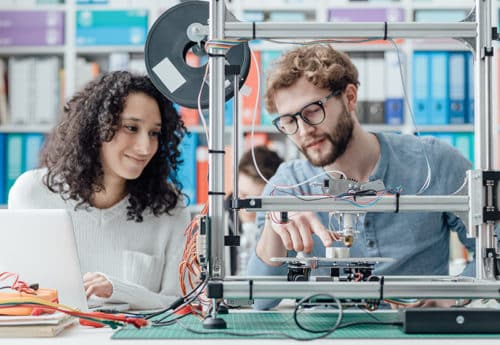According to Ariel Toledano, writing for Massivit 3D, 3D printing technologies engender creativity and collaboration as well as skills development. They promote learning through exploration rather than learning only from textbooks.
A study in China from 2014 found that 3D printing significantly improved spatial learning. Research on 3D printing in education highlights how 3D printed artifacts provide learning benefits that are not achievable with textbook or screen based learning. This further emphasises the need of educational facilities to leverage 3D printing technology.
Embracing technology in education is the way forward for attracting, engaging and retaining students at schools and universities. Some technologies, such as 3D printing, have been extremely effective, offering a variety of uses in schools, universities, libraries, among other educational institutions. Literacy in 3D printing, which is also called additive manufacturing, has become a valuable skill, as it aids teachers and professors in their ability to teach, adapt, and engage students.
Educators can include 3D printing at wide-ranging grade levels. The earlier the exposure is to the technology, the less foreign it will seem. 3D printing technologies enable educators to provide students with accurate physical prototypes, which provides practical, hands-on knowledge useful for understanding scientific concepts. Students can make use of 3D-printed objects to assist in oral presentations, which are both effective and can improve confidence in their public speaking.
Although 3D printers have not yet become standard at every higher education institution, there has been a great deal of adoption by colleges and universities on a global scale. The demand for this technology often comes from the need to prototype applications in various industries. Automotive, aerospace and defence, and healthcare are just a few of the industries that are accelerating the integration of 3D printing. As they do, familiarity with the technology will start becoming integral to the job functionality of many. Indeed, it is anticipated that in the United States alone, 3D printing technologies could create three to five million jobs in the next ten years.
Also important is the ability for the student experience to be rooted in spatial practice rather than only textbook theory. In this way, students and educators can design and delve into impactful learning experiences. At a university level, chemistry students can study detailed 3D printed molecules, while students of graphic design can replicate and create 3D versions of their works.
It doesn’t end there. Medical students can 3D print organs, history students can 3D print and recreate artifacts, and architecture students can print 3D project models. 3D printed parts are often used as test models for science experiments spanning disciplines, including aerospace, robotics and mechanical engineering. 3D printing is multi-use in the world of dentistry as well, ranging from access to root chambers and canals and irrigation.
Libraries in the digital era expand beyond books. Modern libraries include computers and even more modern libraries include 3D printers. Indeed, the nature of libraries is changing to reflect how people learn about subjects using new technologies. Indeed, many university libraries are one of the few multi-disciplinary areas on college campuses. Having 3D printers in a university library makes the technology available to all students rather than restricting access to science and/or engineering students. Having 3D printers in public libraries improves collaboration and knowledge exchange between those interested in learning about the technology.
MASSIVIT
https://massivit3d.com/















